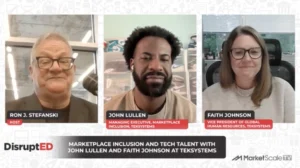Technology Is Helping to Make Construction Safer Than Ever
When it comes to architecture and city planning, technology has completely changed the way our cities and homes look and function. For the people who actually build these structures though, their job is still dangerous. In 2016, nearly 22% of the 5,190 recorded US workplace fatalities were in the construction industry.
Though safety standards and organizations like the Occupational Safety and Health Administration (OSHA) have helped to put standards and safeguards in place to help protect workers, for the most part all of the cutting edge technology that is being applied to make other industries such as aviation or automotive safer has not made it to construction.
With advances in robotics, artificial intelligence (AI), and the internet-of-things (IOT) all of that is changing. Now, technology is finally being applied to help combat OSHA’s Fatal Four Hazards: falls, struck-by, electrocution, and caught-in/between. If these four common causes of fatalities could be addressed, it could save hundreds of lives.
It all starts with identifying hazards before workers even break ground. With Augmented Reality (AR) , Virtual Reality (VR) and Building Information Modeling (BIM) already widespread in the architecture and design industries, it is now being used to help identify potential dangers to the workers. This technology allows for detailed and highly accurate risk assessments to be performed by being able to virtually walk through construction sites and buildings in the planning and design phases. Drones are also being used for surveying construction sites, as well environmental and progress monitoring.
Wearables are also starting to find use in construction, and they are a long way from an old-school hard-hat. Not unlike a Fitbit or smart watch, these small sensors monitor vitals and environmental conditions such as noise and air quality. Thanks to IOT technology, they are inter-connected with other wearables to provide managers with real-time health and safety information on their workers and site, giving them advanced warning of a potential risk or injury.
Smart-fabrics are also in development that promise to be more protective and supportive, as well as capable of monitoring vitals. Larger versions of these wearable sensors can also be placed around the building site to give even more real-time environmental monitoring.
Self-driving cars may still need some development before they are usable on the road, but in a more contained environment like a construction site, self-driving trucks and heavy equipment promise to take some of the human error out of operating these massive machines. Manufacturers like CAT and Komatsu are already integrating remote control into their heavy equipment, and it will not be long before they become self-driving, removing a dangerous occupation.
Even though it has not benefited as much as other industries, construction is finally seeing the benefits of digital and wireless technology as they start to improve efficiency and safety. Though much of this technology is still under development, AR, VR, drones, and robotics are already seeing widespread implementation.








